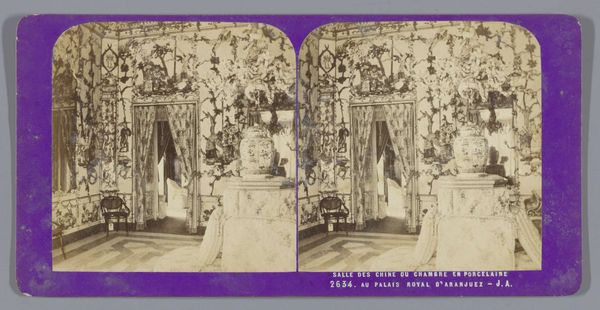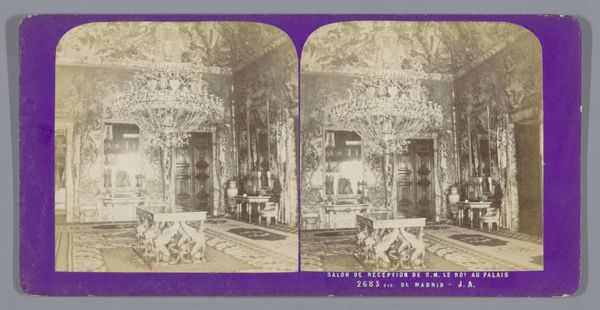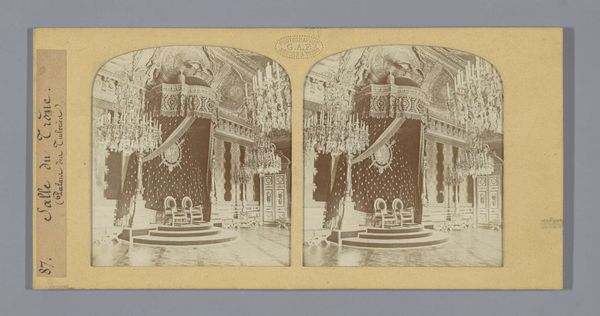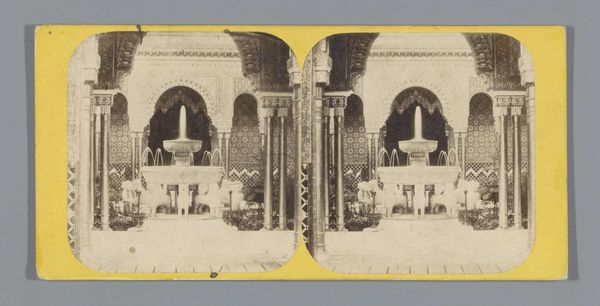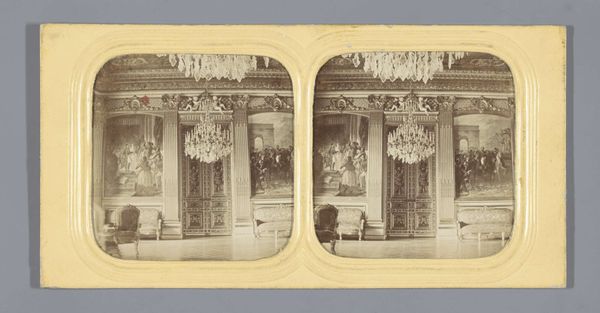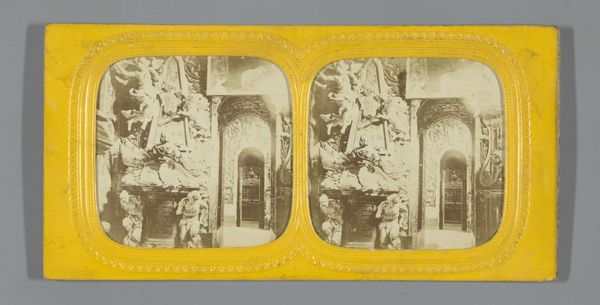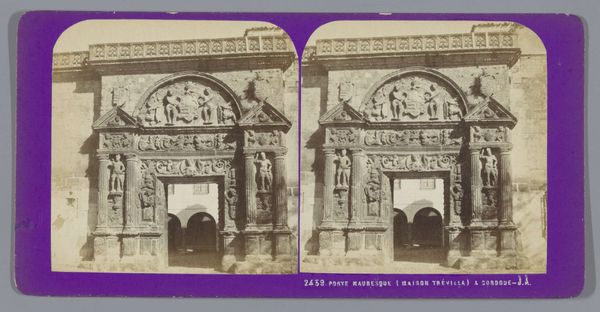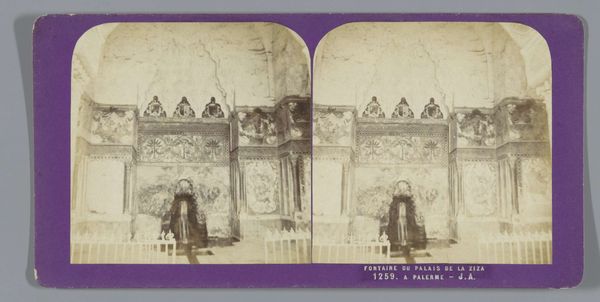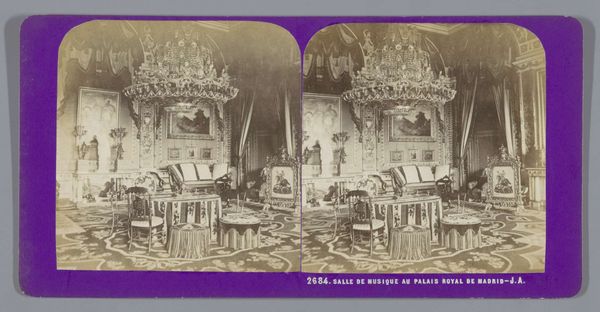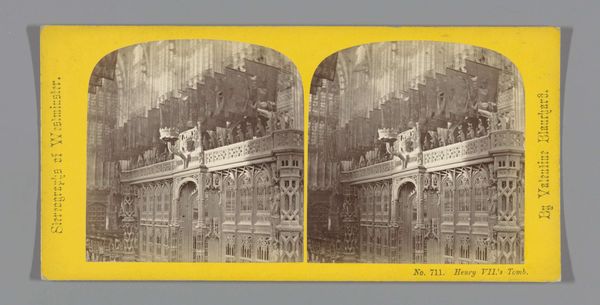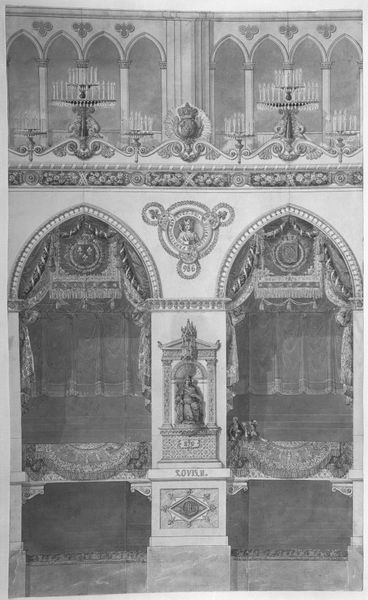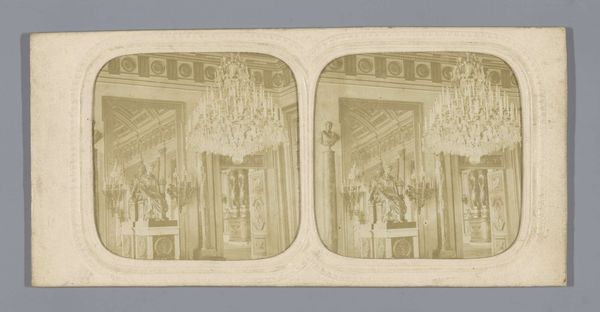
print, photography, albumen-print
# print
#
photography
#
cityscape
#
genre-painting
#
albumen-print
#
realism
Dimensions: height 85 mm, width 170 mm
Copyright: Rijks Museum: Open Domain
Curator: Let's consider "Troonzaal in het Palacio Real te Madrid" by Jean Andrieu. It's an albumen print dating roughly from 1862 to 1876. The image provides a peek into the throne room of the Royal Palace of Madrid. What's your first impression? Editor: Stark! Austere, almost. I’m struck by the two solitary chairs – twin thrones, really – swallowed by an almost oppressive formality. There's a definite stillness that speaks volumes. Curator: It's a very staged image. It's less about capturing an event and more about communicating power, position. The throne room as a physical representation of monarchy. The photograph, especially an albumen print, played a role in disseminating these kinds of images widely during that period. Editor: The detail in this image is incredible! From the elaborate carvings framing the space to those imposing thrones beneath their decorative canopy…you could almost feel lost here. What message was this intense grandeur supposed to send? Curator: It served as a carefully crafted visual argument for the monarchy’s enduring legitimacy. A physical demonstration of its majesty at a time when its authority was being actively questioned by republican and liberal movements. This type of photographic representation reinforced an idea. Editor: Hmm. Is this intended for a larger purpose, or were pieces like this primarily aesthetic documentation for aristocrats and elite art enthusiasts? It would feel like something a visiting ambassador might send home. Curator: Probably more strategic. They could disseminate printed photos like this cheaply and en masse. Beyond personal documentation, it played a key part in constructing the narrative of royal grandeur and solidity in an age of revolution. Editor: Knowing its intent does lend the photograph a somber note. Now, all that decorative energy is no longer decorative: It’s armor. And you can feel it in the very stillness we mentioned at the start. Curator: Exactly. Understanding that context helps decode the symbolism in the image and makes the space portrayed not as celebratory as one would expect, but also as a battlefield. Editor: What I initially perceived as emptiness, and then oppression, I'm starting to see more as a deliberate void around seats of power, emphasizing the occupants' magnitude. It's all quite fascinating. Curator: Agreed, looking beyond just the face value and peeling away the layers provides profound insights that encourage reflection on these constructed ideas and the realities of those times.
Comments
No comments
Be the first to comment and join the conversation on the ultimate creative platform.
